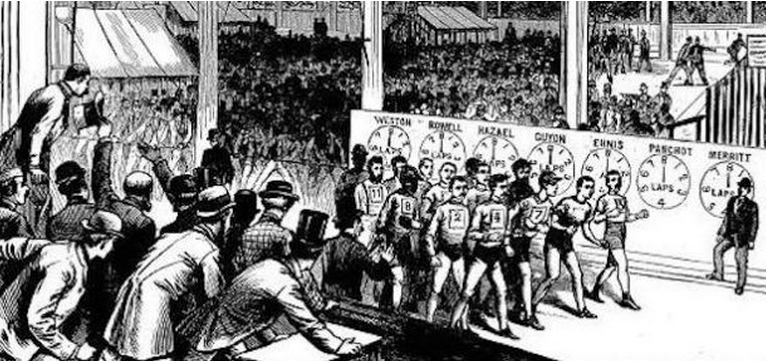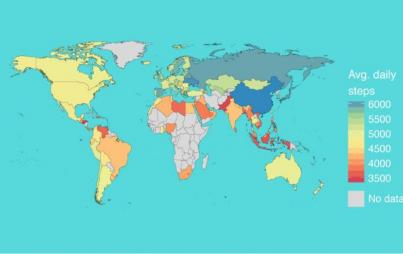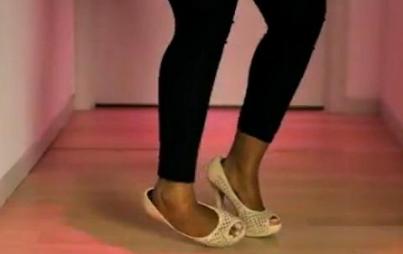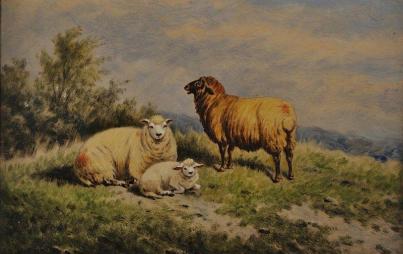
kingofthepeds.com
What sport encompasses multiple-day marathons, performance-enhancing drugs, competing narratives about national identity and throbbing stadiums filled with the dull roar of crowds and celebrities? Sounds like a twisted gumbo of Iron Man, NASCAR, the NBA, the Olympics, and Mad Max huh? Actual answer? 19th century pedestrianism.
Yup, pedestrian as in walking. Strange as it seems in the new millennium, competitive walking was all the craze in the late 1800s. In fact, according to author Matthew Alego in his new book, Pedestrianism, “[w]atching people walk was America’s favorite spectator sport.”
Mass urbanization in the late 19th century reduced possibilities for outdoor recreation, so competitive walking matches filled a void and quickly rose in popularity. (Still unclear why the preference was for walking rather than running—maybe all those bowlers and bonnets got in the way.) Huge crowds came to packed indoor arenas like Madison Square Garden to watch the best walkers go in endless circles over six-day matches (public amusement was prohibited on Sunday). Not for the faint of heart, the marathon walkers might get only a few hours of sleep a day on cots set up inside the track—then off they went again to rack up 600 miles in the ultimate quest for glory.
Enthralling as the walking must have been, spectators went for the general spectacle as well: Brass bands, food vendors, and celebrities galore. Politicians including future president Chester Arthur, publishers and writers like Mark Twain, and entertainers like tiny circus celebrity General Tom Thumb frequented matches.
Rivalries among some of the best walkers also translated to nationalistic competition. Prominent competitor Edward Payson Weston first gained fame after he lost a bet and had to walk from Boston to Washington in 10 days in the middle of winter, and he represented old England in the American imagination. He even wore flashy ruffled shirts and capes, and carried a haute-couture cane. On the other side, up-and-coming walking star Dan O’Leary was a quiet Irish immigrant from Chicago, and represented new America. A self-made, rags to riches kind of guy. And a third prime character: Haitian immigrant Frank Hart, who entered a race on a whim, and did so well he went straight to the walking in the big leagues. Described as “The Negro Wonder,” his success provided an opportunity for blacks to compete in a largely white sport.
Other amusing antics! The use of supposedly performance enhancing drugs (which likely detracted if anything) including coca leaves and champagne, and some of the first corporate sponsorships in sports included products like salt, newspapers, and agriculture.
Sadly, the walking craze met its demise with the invention of the safety bicycle in 1885. Prior to this, bicycles consisted of those old-timey gigantic front wheel, and itty-bitty back wheel contraptions, which—surprisingly!—weren’t agile, fast or very safe. But the modern-day incarnations provided speed and dynamism (and of course more crashes!)—there was no way the poor pedestrians could compare.
But we tip our hats to you, 19th century pedestrianism. Thank you for making an otherwise bleakly industrial-age city life a bit more pleasant, and contributing to urban health for nearly two decades.





